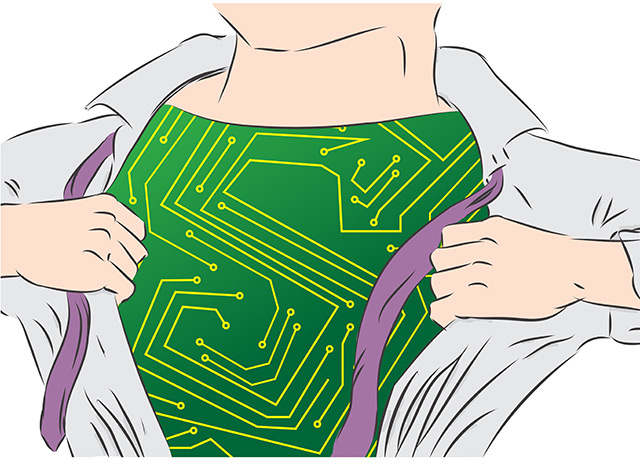
A report on the study notes that researchers in the field have had difficulty obtaining both good flexibility and high energy density in their prototype lithium-ion batteries until this recent success. The breakthrough came from the realization that the human spine is one thing that offers the characteristics the scientists want to impart on their battery design: flexibility with high energy density, plus a stable voltage no matter how it is twisted or flexed.
According to Yuan Yang, an assistant professor of materials science and engineering at Columbia Engineering and lead author of the study, the method they devised for their prototype is such a simple yet highly effective. "The energy density of our prototype is one of the highest reported so far," he said. "We've developed a simple and scalable approach to fabricate a flexible spine-like lithium-ion battery that has excellent electrochemical and mechanical properties. Our design is a very promising candidate as the first-generation, flexible, commercial lithium-ion battery."
Their next step is to optimize the design and improve its performance.
As for how exactly the human spine factors into their prototype design, Yang said that he was able to draw inspiration from its suppleness while doing sit-ups in the gym. Since the human spine is known to be highly flexible and distortable, not to mention mechanically robust with soft marrow components that interconnect hard vertebra parts, he used it as the basis for a new design that relies on a similar structure.
As a result, Yang and his team of researchers created a prototype that has a thick, rigid section that is used to store energy by winding electrodes around a thin, flexible part. And this is where vertebra-like stacks of electrodes can be found lumped together. After testing, the researchers concluded that the new design offers excellent flexibility for the whole battery module.
According to Yang, they even managed to achieve a relatively high energy density with their current model. "As the volume of the rigid electrode part is significantly larger than the flexible interconnection, the energy density of such a flexible battery can be greater than 85 percent of a battery in standard commercial packaging," he said. In testing, it even successfully survived a harsh dynamic mechanical load test thanks to the use of its bio-inspired design.
Perhaps the most interesting part of the study is the fact that, after cycling, the battery was able to show stability, along with a stable voltage profile no matter how much it is flexed or twisted, according to the researchers. They said that even when the cell was continuously flexed or tested while discharging, its voltage profile remained. This is promising output from the radical new battery design, and could indeed be a sign of greater things to come.
For now, Yang says that they will anticipate that their bio-inspired, scalable method to fabricate flexible Li-ion batteries could greatly advance the commercialization of flexible devices. And with just a little more work put into it, that's not so hard to believe.
Discover more innovative ways of storing energy in Power.news.
Sources include:
Please contact us for more information.





















